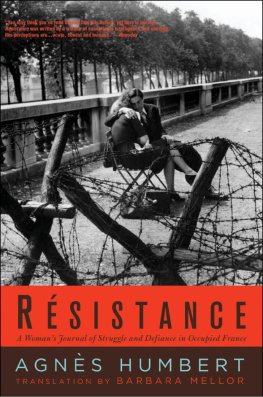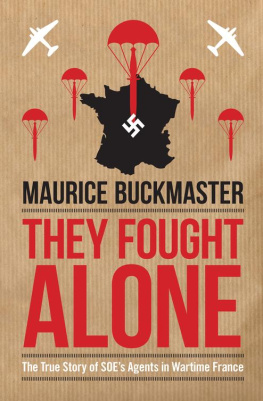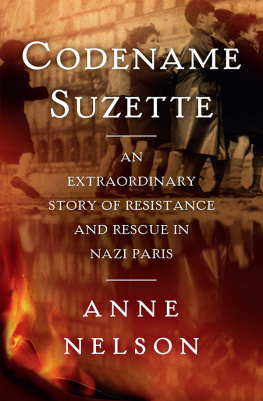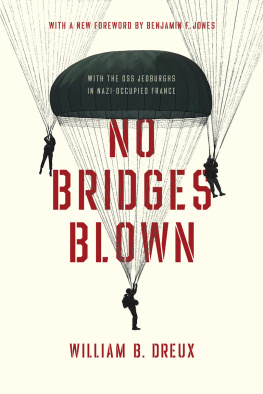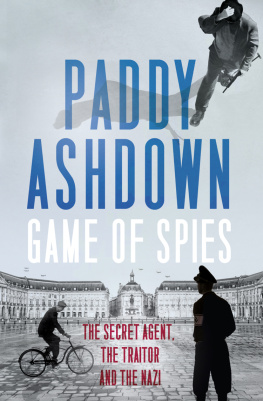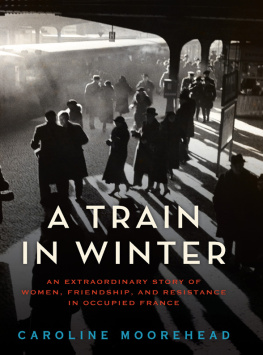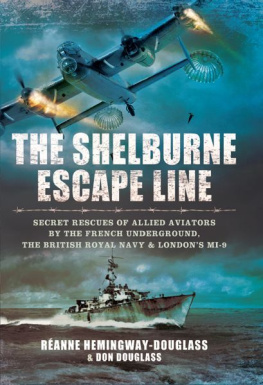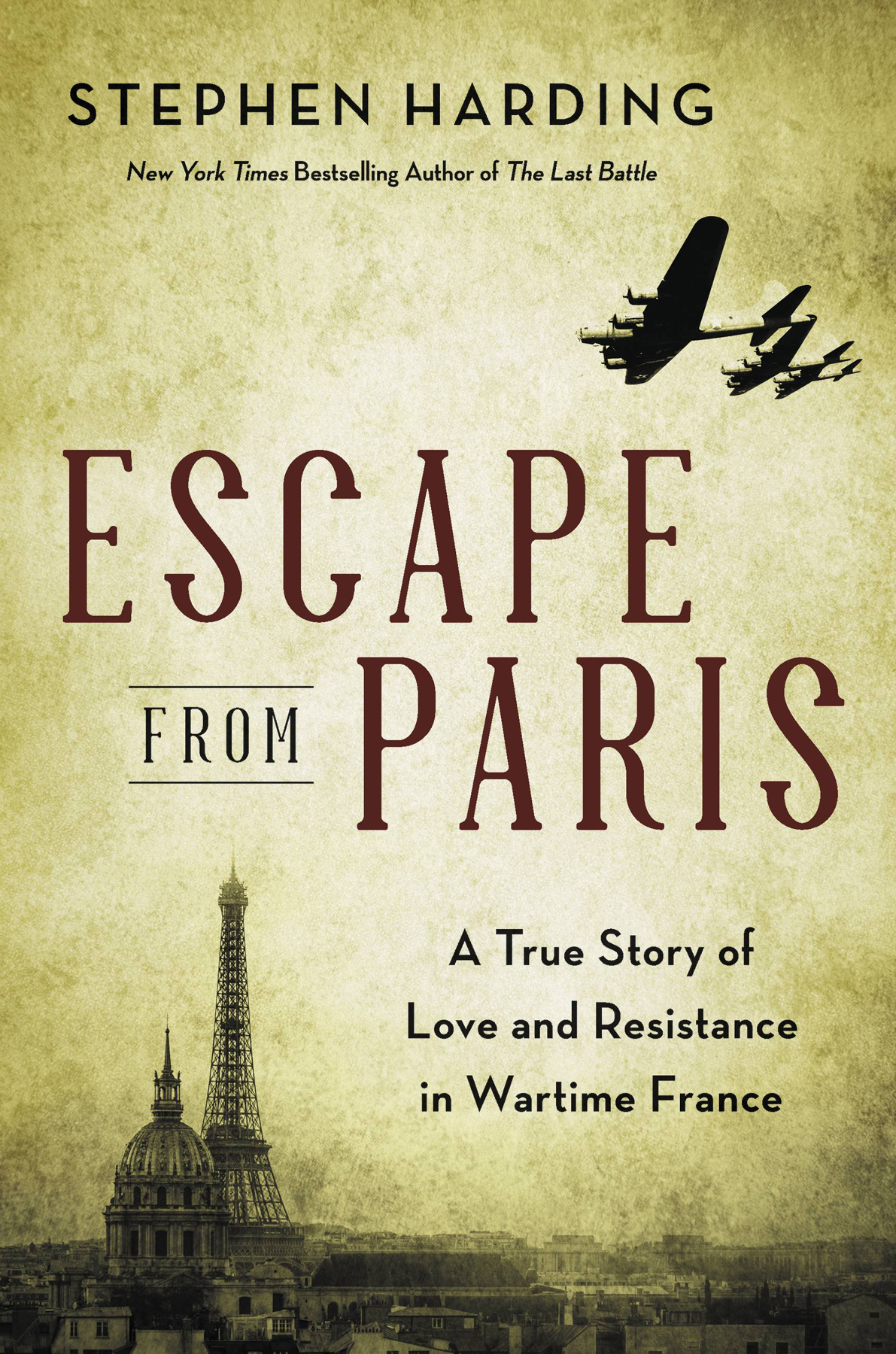Copyright 2019 by Stephen Harding
Cover design by Amanda Kain
Cover images credits: planes Michael Ochs Archives/Getty Images; city Szilard Szasz Toth/Shutterstock; sky background TraseRRR/Shutterstock; sky background Ratana21/Shutterstock
Cover copyright 2019 Hachette Book Group, Inc.
Hachette Book Group supports the right to free expression and the value of copyright. The purpose of copyright is to encourage writers and artists to produce the creative works that enrich our culture.
The scanning, uploading, and distribution of this book without permission is a theft of the authors intellectual property. If you would like permission to use material from the book (other than for review purposes), please contact permissions@hbgusa.com. Thank you for your support of the authors rights.
Da Capo Press
Hachette Book Group
1290 Avenue of the Americas, New York, NY 10104
HachetteBooks.com
Twitter.com/HachetteBooks
Instagram.com/HachetteBooks
First Edition: October 2019
Published by Da Capo Press, an imprint of Perseus Books, LLC, a subsidiary of Hachette Book Group, Inc. The Da Capo Press name and logo is a trademark of the Hachette Book Group.
The Hachette Speakers Bureau provides a wide range of authors for speaking events. To find out more, go to www.hachettespeakersbureau.com or call (866) 376-6591.
The publisher is not responsible for websites (or their content) that are not owned by the publisher.
Library of Congress Cataloging-in-Publication Data has been applied for.
ISBNs: 978-0-306-92216-9 (hardcover), 978-0-306-92214-5 (ebook)
E3-20190905-JV-NF-ORI
As always, for Mari
Think not only of their passing, remember the glory of their spirit.
Inscription on the wall of the Normandy American Cemetery Chapel
F ROM 22,000 FEET ABOVE THE E NGLISH C HANNEL, G ERMAN-OCCUPIED France appeared remarkably serene on the morning of July 14, 1943. Out the left waist gun position of his B-17 Flying Fortress, Staff Sergeant Joe Cornwall could trace the coast of Normandy as far north as Dieppe, the thin white ribbon of breaking surf clearly discernable from the sun-dappled greens and browns of farm fields farther inland. Buffeted by the forty-below-zero winds that poured in through both of the bombers waist windows and cold despite his heavy, sheepskin-lined flying clothes, thick gloves, and leather helmet, the twenty-eight-year-old airman readjusted his oxygen mask and daydreamed briefly of how warm it must be on the sandy beaches four miles below.
Gazing upward, Cornwall took in a less tranquil but equally stirring sight. Barely fifty feet off the Fortresss left wing, two other B-17s droned along in formation, one slightly ahead and higher, the other somewhat lower, offset and in trail. And though he could not see them from his position, the gunner knew that two additional bombers were right where they were supposed to beone directly forward of and slightly above his aircraft, and the other ahead and off to the right. Together, the five Fortressesa sixth had turned back to England with mechanical problemsconstituted the low squadron of the U.S. Army Air Forces 94th Bomb Group. Out fellow gunner Frank Santangelos right waist window, Cornwall could see the six B-17s of the units lead squadron, highlighted by the bright morning sunlight. Farther up and directly to the right were the eight bombers that constituted the groups high squadron; there should have been a ninth, but the lead machine had also been forced to return to base.
Nor was the 94th alone in the sky that morning, because stacked upward and to the right of the groups formation were the thirty-six other B-17s of the 95th, 96th, and 100th Bomb Groups. Together the fifty-five Fortresses comprised the 4th Bombardment Wing, and the four contrails that streamed from each machine looked, Joe thought, like long, slender skeins of wispy cotton candythough his tinted goggles turned the white vapor trails an ethereal, golden yellow. Above and to either side of the bomber stream dozens of nimble Spitfire fighters of the Royal Air Force (RAF) spun their own interwoven webs of condensation as they ranged back and forth, their pilots alert for the first sign of German interceptors.
The enemy fighters would almost certainly not descend until after low fuel reserves forced the Spits to turn for home, but the ragged blossoms of dirty black-gray smoke that had just begun to appear ahead of the ponderous Fortresses clearly indicated the Germans were aware of the aerial armadas progress. While the antiaircraft fire was still relatively light and inaccuratein their dry postmission reports the 94ths intelligence officers classified such barrages as meagerevery man in the bomber stream knew that would certainly change the nearer the formation got to its target. That objectivethe commercial airportturnedLuftwaffe base at Le Bourget, outside Pariswas heavily defended by flak batteries, and Cornwall briefly mused about how ironic it would be to get shot down during a raid on the place where Charles Lindbergh had received a heros welcome after his solo flight across the Atlantic sixteen years earlier. Even more ironic, the young gunner thought, would be to die bombing France on this particular daythe 154th anniversary of a key event in the now subjugated nations history: Bastille Day.
S OME FORTY MILES TO THE SOUTHEAST OF THE A MERICAN BOMBER STREAM, Major Egon Mayer was just lifting his Focke-Wulf Fw 190 off from the Luftwaffe airfield at Beaumont-le-Roger. The twenty-six-year-old was one of Germanys most successful fighter pilots, and as of that morning had sixty-eight confirmed aerial victoriesthe majority of them RAF Spitfires downed over France or the Channel. But the start of American daylight bombing raids in the fall of 1942 had brought about a gradual change in the nature of Mayers victims, from nimble fighters to what Luftwaffe pilots called Viermots, the four-engine B-17s and B-24 Liberators of the fledgling U.S. VIII Bomber Command.
The change in prey had also necessitated a change in tactics for the German pilots tasked with intercepting the heavy bombers. The American formations could throw out a deadly stream of defensive fire in all directions, and the attacks that worked so well against fightersa relatively slow, overtaking approach from the side or rear that allowed a concentration of hits on the enemys control surfaces and cockpitwere vastly more dangerous and notably less successful when attempted against a Viermot bristling with machine guns. Mayer himself had helped develop a new way to engage the American heaviesa high-speed, head-on attack that took advantage of the relatively weak nose armament of early model B-17s and B-24s and concentrated the attackers fire on the bombers cockpit. The tactic demanded a high degree of skill and considerable courage on the part of the attacker; with the fighter and its target closing at a combined speed of nearly 500 mph, even the slightest miscalculation on the Luftwaffe pilots part could spell disaster for him as well as his quarry. But when executed correctly the head-on attack could be devastatingly effective, as Mayer proved the first time the new technique was used in combat. During a U.S. raid on the German submarine pens at Saint-Nazaire, France, on November 23, 1942, he shot down two Fortresses and a Liberator in less than thirty minutes.
By the summer of 1943 Mayer was not only among the Luftwaffes highest-scoring fighter pilots, he was the commander of one of the services most renowned unitsJagdgeschwader (Fighter Wing) 2. Bearing the honorific title Richthofen after Germanys leading World War I ace, JG 2 was the first line of defense against the Allies increasingly vigorous strategic-bombardment campaign. The units three groups of heavily armed and highly lethal Messerschmitt Bf 109 and Fw 190 fighterssome 120 aircraft in allwere in action almost every day, rising from airfields across western France to engage the bomber streams. And Mayer, a pilot arguably as skilled and certainly as determined as the man for whom JG 2 was named, flew as many missions as his administrative duties allowed.





